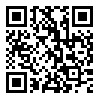year 5, Issue 20 (12-2006)
J. Med. Plants 2006, 5(20): 42-47 |
Back to browse issues page
Download citation:
BibTeX | RIS | EndNote | Medlars | ProCite | Reference Manager | RefWorks
Send citation to:



BibTeX | RIS | EndNote | Medlars | ProCite | Reference Manager | RefWorks
Send citation to:
Ebrahimzadeh Mousavi H, Rohani M, Khowsravi A, Mehrabi Y, Basti A. The Evaluation of Eucaliptus camaldolensis Dehnh. Esscence Application in Control of Fungal Pollution of Trout Eggs. J. Med. Plants 2006; 5 (20) :42-47
URL: http://jmp.ir/article-1-653-en.html
URL: http://jmp.ir/article-1-653-en.html
1- Associated Prof. of Vet Faculty, Tehran University, Tehran, Iran , hmosavi@ut.ac.ir
2- Scientific board of Iranian Fisheries Research Organisation (IFRO)
3- Proffessor of Vet Faculty, University of Tehran, Tehran, Iran
4- Expert of Iranian Fisheries Organisation
5- Associated Prof. of Vet Faculty, Tehran univ. Tehran, Iran
2- Scientific board of Iranian Fisheries Research Organisation (IFRO)
3- Proffessor of Vet Faculty, University of Tehran, Tehran, Iran
4- Expert of Iranian Fisheries Organisation
5- Associated Prof. of Vet Faculty, Tehran univ. Tehran, Iran
Abstract: (5913 Views)
Background: The use of medical plants is necessary as the antifungal agent substitute the malachite green for control of fungal pollution in salmonid hatcharies. Objective: The capability of Eucaliptus camaldolensis escence in control of fungal pollution about 50 kg trout eggs 4 years old Oncorhynchus mykiss brooders were evaluated in clinical and farm conditions, with using of 1,5,10,25,50 and 100 ppm dosages of this escence daily with 3 repetition until the eyed egg stage (about 18-20 days). Besides, under the equal condition, the positive control group was treated with 1 ppm malachite green and the negative control group was assessed without any drugs. Results: After culturing of fungal eggs, a pollution of Saprolegnia parasitica and Fusarium solani was obsereved. MIC result of Eucaliptus escence against Saprolegnia was 2.3 and aginst Fusarium was 8.2 ppm. Measuring the physical and chemical factors of water, no negative effect is recognized. Conclusion: The eucalyptus escence specially in the doses of 25, 50 and 100 ppm is significantly different from negative control group (p< 0.05) and created suitable inhibition aginst water fungi.
Keywords: <, i>, Eucaliptus camaldolensis<, /i>, Malachite green, Onchorhynchus mykiss, Eyed egg, Fungal pollution
Type of Study: Research |
Subject:
Pharmacognosy & Pharmaceutics
Received: 2004/11/17 | Accepted: 2006/12/12 | Published: 2007/01/21
Received: 2004/11/17 | Accepted: 2006/12/12 | Published: 2007/01/21
Send email to the article author
| Rights and permissions | |
 |
This work is licensed under a Creative Commons Attribution-NonCommercial 4.0 International License. |







